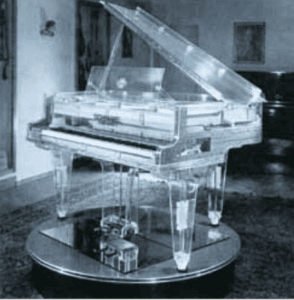



"I was disappointed at first," she says, "because all of the companies I asked say their stuff is made in China." But Adler eventually discovered Schimmel, a 125-year-old, family-owned company in Braunschweig that also happens to make the best-selling German piano in America. While developing the Ampeggio, Adler decided to approach some piano companies for help in transforming into reality the now-complex cabinet design. The narrowest of those boards (about 2") are used to create the tight curve of the horn's first fold, with wider boards comprising the second bend, near the top of the cabinet, and the widest used to form the comparatively large-radius curve just behind the horn's mouth (which itself measures about 14" square).
#Schimmel piano factory series#
Its surfaces are all faceted." Realizing that she couldn't control the reflection of the soundwaves within a circular path, Adler went the other route and created the bends in the Ampeggio horn with a series of "facet boards," the sizes of which increase as the sound travels from throat to mouth. The Voxativ driver's high excursion was one boon to the design effort another was an unexpected source of engineering inspiration: "I had the idea to optimize radiation resistance," Adler says, "and I thought of the Lockheed 'Stealth' fighter plane, which has no real curves. Thus did the Ampeggio come about: a twice-folded horn, nearly 9' from throat to mouth, that's intended to amplify the driver's rear waveand because all such horns act as acoustical low-pass filters, the real objective is to maximize in-room bass extension.
#Schimmel piano factory drivers#
"I wasn't interested in making cabinets," Inès Adler says, "but when drivers get better, the idea comes over you: Maybe I can do more."


 0 kommentar(er)
0 kommentar(er)
